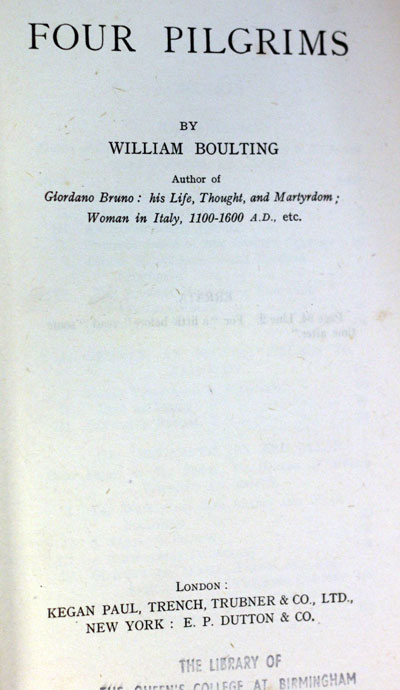A record of the journeys of world-changing explorers: Lodovico de Varthema, 15th cent AD, Ibn Batuta, 1304-1377 AD, Saewulf, 12th cent AD, Xuanzang, ca. 596-664 AD
Foreword:
Pilgrimage has been popular in all countries and at all times. For what could be happier than an agreeable change which should contribute at once to welfare of soul, refreshment of spirit, and vigour of body ? Adventures on the way gave zest to the enterprise. If the more timid or feeble were content to visit neighbouring shrines, those of hardier mould, like the Wife of Bath, took more formidable journeys.
“Thries hadde she been at Jerusalem ;
She hadde passed many a straunge strem ;
At Rome she hadde been, and at Boloigne,
In Galice at Seint Jame, and at Coloigne,
She koude much el of wandrynge by the weye.”
Some of the boldest and bravest of ancient travellers were pilgrims, and we have their records of wide wandering But their style is archaic, has at best little purely literary merit, and is usually forbidding. They are little known, except to the special student.
The footprints then are scanty, and all the worse for time, which testify to ardent spirits that once inhabited the warm vesture of flesh, but have long, long ago been laid to rest. I have tried to set forth certain of these dead and half- forgotten worthies as with “organs, dimensions, senses, affections, passions,” even as we. Four have been chosen. Three of these were shrewd, fearless, observant men, who overcame surpassing obstacles and met with adventure almost unparalleled.
The first of my bundle of four was a Chinaman, a Buddhist monk of the early Seventh Century, who started alone on an almost impossible quest. My second was an Englishman of the earliest years of the Twelfth Century, who gives us some notion of what the ordinary palmer was like who got to Jerusalem,
“e qui devoto
II gran sepolchro adora e scioglie il voto ”
(“and venerates the Holy Sepulchre and discharges his vow”). My third was a Mohammedan, who, in the first half of the Fourteenth Century, made several pilgrimages to Mecca and ran over the world from Tangier to Pekin and from Turkestan to Timbuktu. My fourth was a very son of the glowing age of Julius II, the first European Christian on record to reach Mecca, one who outstripped the Portuguese in reaching the aromatic islands of the Banda Sea. In each case, there is a brief historical foreword to give the pilgrim due introduction into his proper setting.



